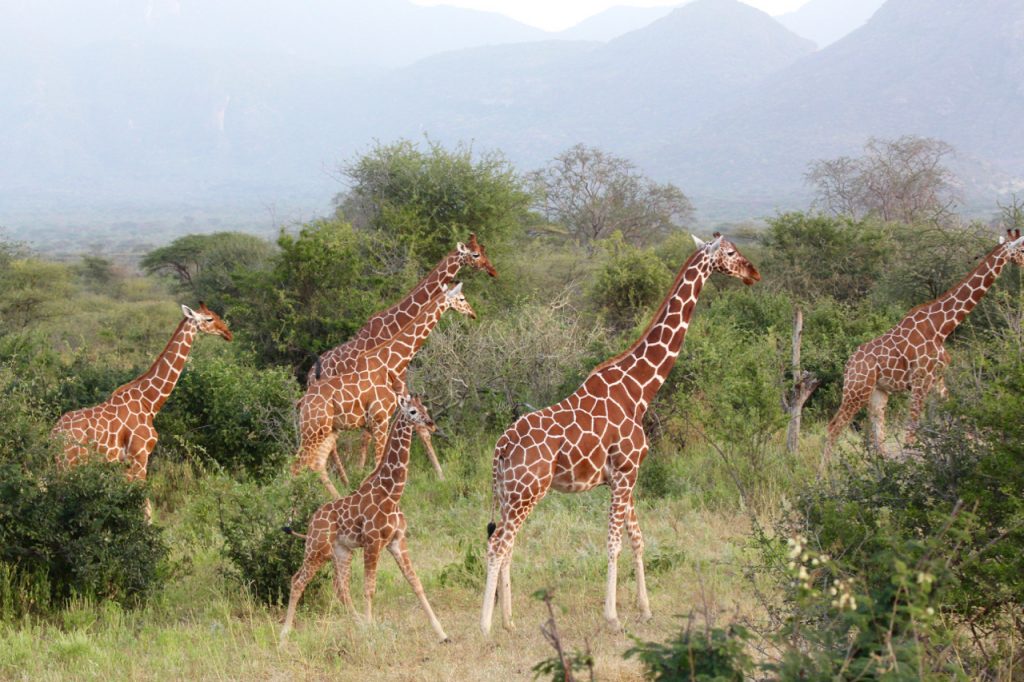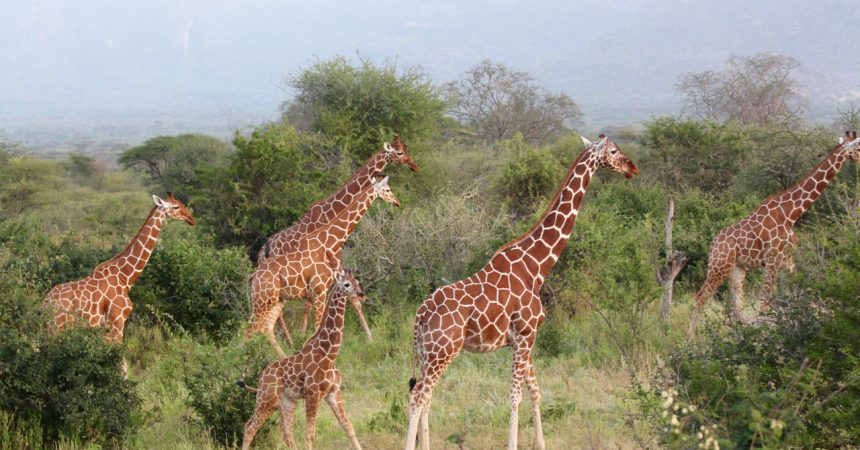Zoo InternQuest is a seven-week career exploration program for San Diego County high school juniors and seniors. Students have the unique opportunity to meet professionals working for the San Diego Zoo, Safari Park, and Institute for Conservation Research, learn about their jobs, and then blog about their experience online. Follow their adventure here on the Zoo’s website!
 For many, giraffes are recognized as being the tallest creatures of the natural world and are a symbol of the wide, sweeping landscape of the African savannah. However, these iconic animals, specifically the reticulated giraffe of Kenya, have suffered a decline in population in recent years with many of their threats going unrecognized. Their rapid decline has largely gone unnoticed, leading many to the false misconception that they are stable in the wild.
For many, giraffes are recognized as being the tallest creatures of the natural world and are a symbol of the wide, sweeping landscape of the African savannah. However, these iconic animals, specifically the reticulated giraffe of Kenya, have suffered a decline in population in recent years with many of their threats going unrecognized. Their rapid decline has largely gone unnoticed, leading many to the false misconception that they are stable in the wild.
This tragedy, referred to as a silent extinction by some, has caused giraffe populations to fall by 40%, and has brought their extinction to seven African countries. Through the utilization of Wildwatch Kenya, the San Diego Zoo is hoping to stabilize their numbers before these majestic animals are lost forever. On Wednesday, we met with Ms. Nikki Egna, a contracted Research Associate working for the Institute for Conservation Research, who explained to us the importance of working to conserve this species.
Prior to beginning this project, most scientists were unaware of giraffe habitat ranges, population numbers, and outstanding threats. Without this knowledge, many scientists didn’t know that these creatures were in trouble nor was there a precedent to base future research upon. One major issue is that 90% of giraffe habitat overlaps with pastoral communities, meaning they often encounter livestock and competition for resources. Additionally, agriculture often depletes the soil of the nutrients needed to grow more plants that all these animals need to survive. In addition to these threats, ongoing droughts further damage these natural habitats. Along with humans, giraffe and livestock are all attempting to coexist, but giraffes are struggling to maintain a foothold in their native terrain.
Human dimensions are a critical aspect of giraffe conservation, as researchers needed to gain the trust of the community before setting up cameras, tracking both giraffes and livestock, and educating the local men and women about how their tall, spotted neighbors aren’t doing so well. By surveying the local communities, they discovered that these people – like us – love giraffes, and only hunt them out of necessity or cultural beliefs. Moreover, with the drought claiming some of the community’s livestock, it was imperative for researchers to remember that conservation wasn’t a priority when survival hangs in the balance. However, by learning that these beloved animals were in trouble and they had the power to bring them back from the brink, the community came together and was willing to cooperate with bringing giraffe numbers back up. Giraffes were also seen in a positive light, as researchers donated desks to their schoolhouse in honor of the giraffes they were trying to protect. Since then, no giraffes have been poached in the area.
Additionally, giraffes are tracked using devices attached to their ossicones; the tiny horns on top of their head, which are made of bone. By using these trackers, researchers can track if the giraffes have any geographical barriers and their movement patterns throughout their respective habitats. This also gives researchers the data they need to defend giraffes from a political standpoint, preventing the government from building in areas where these threatened species live. Additionally, trail cameras are placed throughout their habitat in an effort to photo-monitor the actions of all the creatures of the savannah, and by using spot pattern technology, researchers are able to determine if the same giraffe is returning to a specific area. By working with organizations like the Giraffe Conservation Foundation, the Nature Conservancy, and the Loisaba Conservancy, the San Diego Zoo is building a collaborative effort to save the majestic reticulated giraffe.
Not all conservation stories are in the spotlight. Some species struggle to gain recognition, but education and widespread awareness are helping to close the gap between struggling species and the support they need. Building connections with these wondrous creatures and contributing to a global network of knowledge are ways we can ensure these species will stick around and stand tall for generations to come.
Jennah, Conservation Team
Week One, Fall Session 2018


